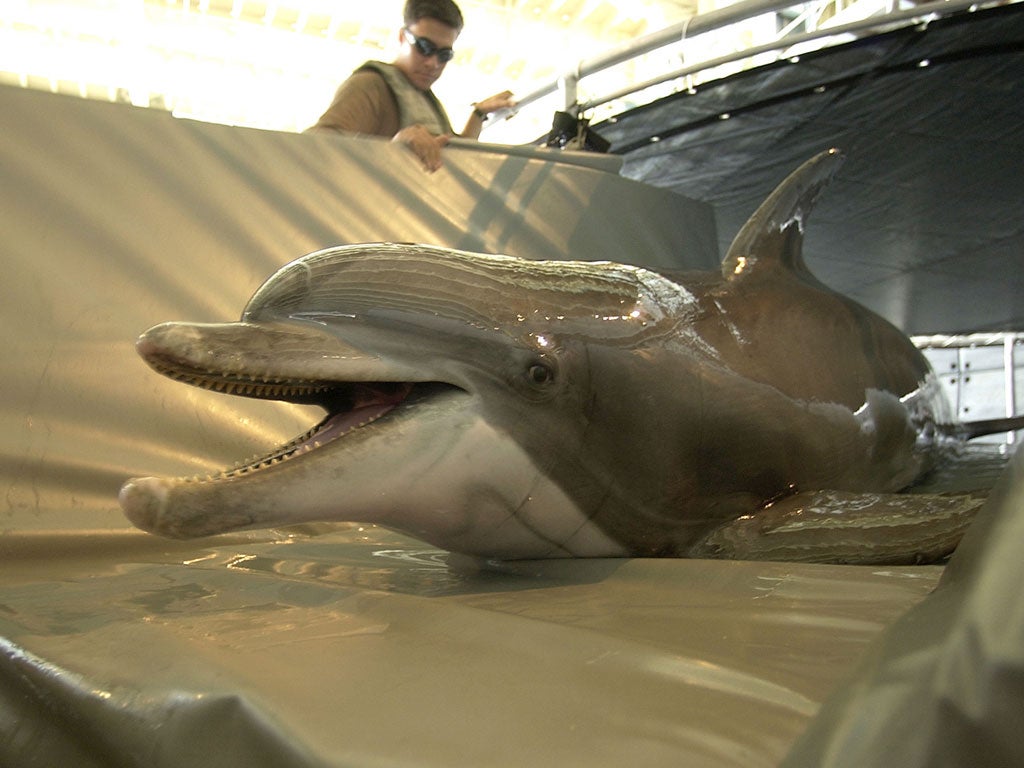
Your support helps us to tell the story
From reproductive rights to climate change to Big Tech, The Independent is on the ground when the story is developing. Whether it's investigating the financials of Elon Musk's pro-Trump PAC or producing our latest documentary, 'The A Word', which shines a light on the American women fighting for reproductive rights, we know how important it is to parse out the facts from the messaging.
At such a critical moment in US history, we need reporters on the ground. Your donation allows us to keep sending journalists to speak to both sides of the story.
The Independent is trusted by Americans across the entire political spectrum. And unlike many other quality news outlets, we choose not to lock Americans out of our reporting and analysis with paywalls. We believe quality journalism should be available to everyone, paid for by those who can afford it.
Your support makes all the difference.Some dolphins used by the US Navy to track down mines will soon lose their jobs to robots – but they will be reassigned, not retired.
Starting in 2017, 24 of the Navy's 80 military-trained dolphins will be replaced by a 12ft unmanned torpedo-shaped vehicle, according to the newspaper U-T San Diego.
The military said the machines can do some of the same mine-hunting duties as the dolphins. And they can be manufactured quickly, in contrast to the seven years it takes to train a dolphin.
But the dolphins will not be relieved of all duties. They will be used along with sea lions for port security and retrieving objects from the sea floor, the newspaper reported.
The Navy's $28m marine-mammal programme has been in operation since the late 1950s and once included killer whales and sharks. Based in San Diego, it currently uses 80 bottle-nosed dolphins and 40 California sea lions.
In recent years, dolphins have been deployed to Iraq and Bahrain to patrol for enemy divers and mark the locations of mines. Using their innate sonar, the dolphins find and mark mines in shallow water, in deep water when tethers are used, and on the bottom where sediment cover and plant growth can hide the devices.
AP
Join our commenting forum
Join thought-provoking conversations, follow other Independent readers and see their replies
Comments